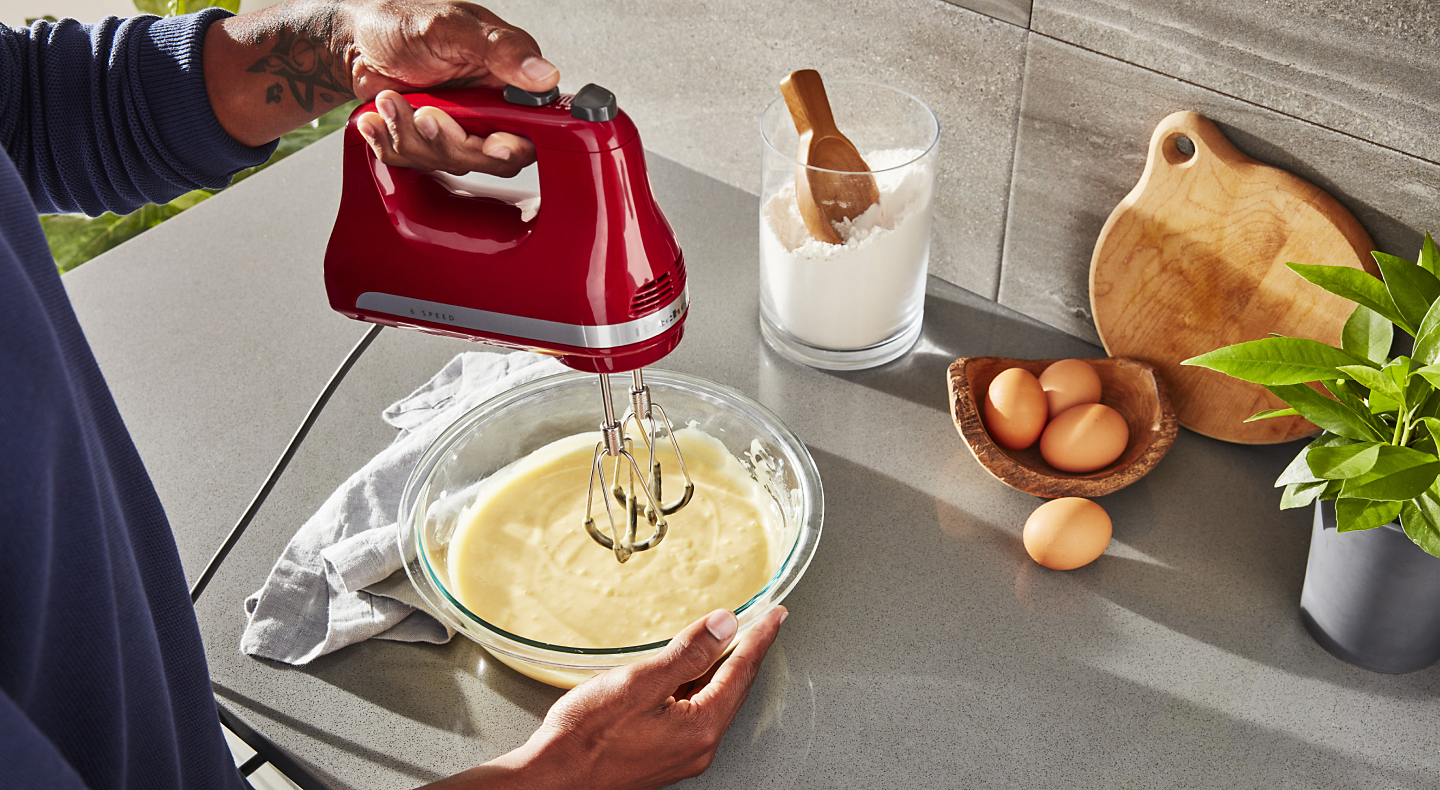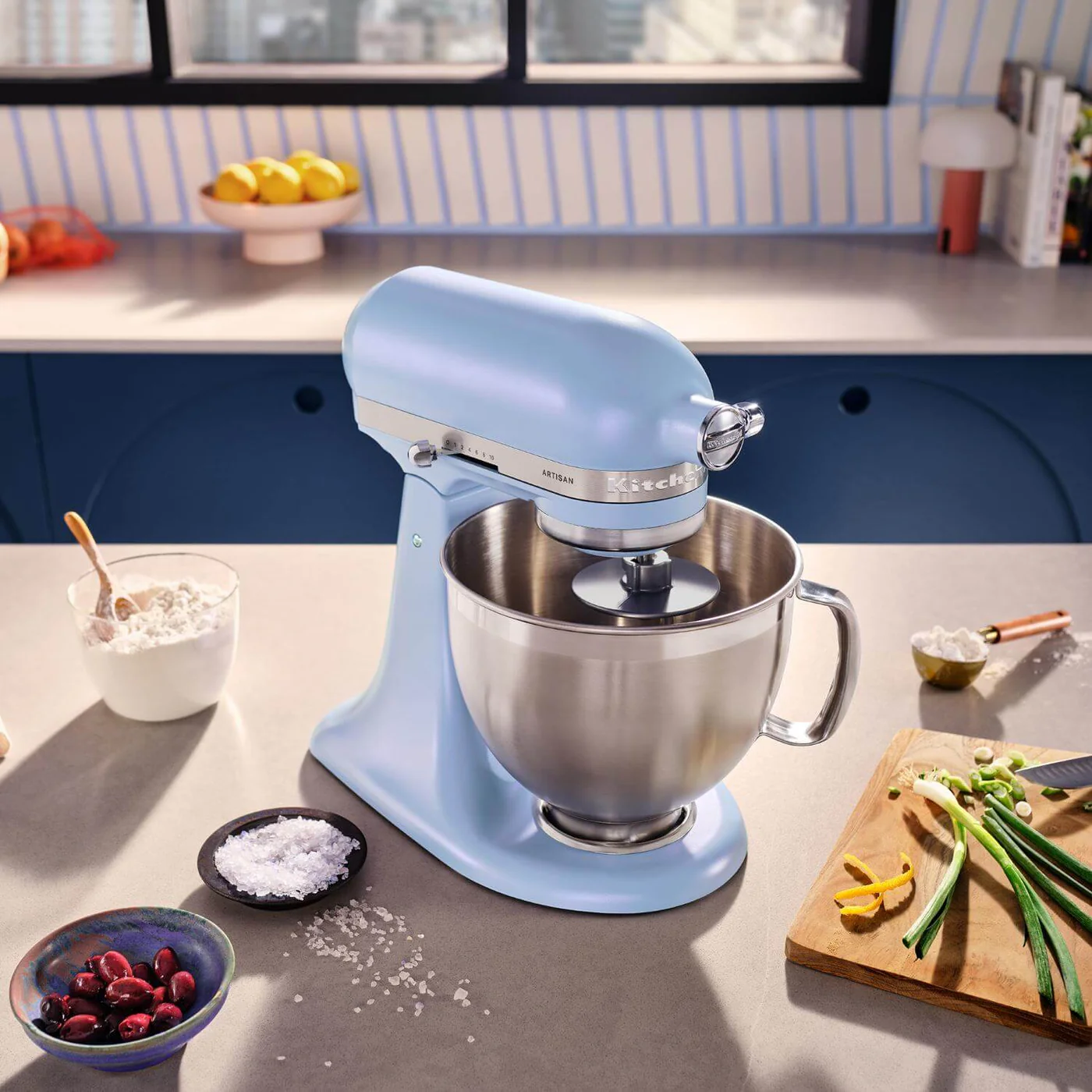Welcome to the heart of your kitchen’s potential! You’ve got that shiny hand mixer, a trusty sidekick for everything from fluffy cakes to creamy mashed potatoes. But let’s be honest, do you ever find yourself staring at that speed dial, wondering if you’re just supposed to crank it to max and hope for the best? You’re not alone. Knowing How To Use Different Speeds On A Hand Mixer is the secret ingredient that separates good results from great ones. It’s the key to avoiding a flour explosion on your countertop and achieving the perfect texture every single time.
Think of your hand mixer’s speed settings not as a simple on/off switch, but as gears in a car. You wouldn’t start in fifth gear, right? The same principle applies here. Each speed has a specific job, designed to coax your ingredients into culinary perfection. In this guide, we’ll demystify that dial and turn you into a true hand mixer maestro.
From Hand-Cranked to High-Tech: A Quick Spin Through History
Before we dive into the speeds, let’s appreciate the journey of this little powerhouse. The earliest mixers were hand-cranked contraptions, requiring some serious elbow grease. The first electric stand mixer roared to life in the early 1900s, but it was the post-war boom of the 1950s and 60s that saw the portable, lightweight hand mixer become a staple in homes across America and the world. Early models were simple, often with just two or three speeds. Today, we’re spoiled for choice with mixers boasting five, seven, even nine speeds, plus fancy features like slow-start technology and turbo boosts.
Key Features to Look For in a Hand Mixer
If you’re in the market for a new mixer or just want to understand yours better, here are the core features that matter. Understanding these will give you a better grasp of how to use different speeds on a hand mixer effectively.
- Power (Wattage): Measured in watts, this tells you the motor’s strength. A higher wattage (200-250 watts is a great sweet spot) means the mixer can handle thicker doughs and batters without overheating or straining.
- Speed Settings: Most modern mixers have between 3 and 9 speeds. More speeds offer finer control. A crucial feature to look for is a “slow start” or a very low first speed to prevent ingredients from flying out of the bowl.
- Attachments: The classic twin beaters are standard, but many models also come with dough hooks for bread and whisks for whipping air into egg whites or cream. The quality of these attachments, usually stainless steel, is vital for longevity.
- Corded vs. Cordless: Corded models offer consistent power, while cordless mixers provide unbeatable portability. It’s a trade-off between power and convenience.
The Ultimate Guide: How to Use Different Speeds on a Hand Mixer
Alright, let’s get down to business. We’re going to break down the speed settings into three main categories: Low, Medium, and High. Keep in mind that the numbers might vary slightly between brands (one mixer’s “3” might be another’s “4”), but the principles remain the same.
Low Speeds (Typically 1-2): The Gentle Start
Think of the low speeds as your “stir” or “combine” settings. This is where every mixing project should begin. Starting low is the number one rule to prevent your kitchen from looking like a blizzard hit.
Use Low Speeds for:
- Combining dry ingredients: When you first add flour, cocoa powder, or baking soda to your wet ingredients.
- Adding delicate items: Gently folding in chocolate chips, nuts, or fruit without breaking them apart.
- Starting any recipe: Always begin on low for the first 15-30 seconds to incorporate ingredients before ramping up.
- Mixing thin liquids: Blending sauces or gravies without splashing.
Expert Tip from Pastry Chef Amelia Rose: “The slow-start feature on modern hand mixers is a game-changer. If your mixer doesn’t have one, just make sure you always start on the absolute lowest setting. It saves you so much cleanup time and ensures your ingredients combine gently, which is crucial for tender baked goods.”
Medium Speeds (Typically 3-4): The Workhorse
These are your all-purpose, go-to speeds. Once your ingredients are incorporated on low, you’ll likely spend most of your time in the medium range. This is where the real “mixing” and “beating” happens.
Use Medium Speeds for:
- Creaming butter and sugar: This is the foundational step for most cookies and cakes. A medium speed is perfect for beating air into the mixture until it’s light and fluffy.
- Mixing cake and brownie batters: Once the dry ingredients are just combined, switch to medium to ensure everything is well-mixed and smooth, but be careful not to overmix.
- Beating cookie dough: A sturdy mixer can handle most cookie doughs on a medium setting.
- Mashing potatoes: For the creamiest mashed potatoes, a hand mixer on medium speed is a fantastic tool.
High Speeds (Typically 5+): The Air Incorporators
Welcome to the fast lane! High speeds are all about incorporating a massive amount of air to create volume, lightness, and stiff peaks. Using high speed requires a bit more control, so make sure you have a firm grip.
Use High Speeds for:
- Whipping egg whites: This is essential for meringues, soufflés, and angel food cake. High speed transforms liquidy egg whites into a glossy, stiff foam.
- Whipping heavy cream: To make homemade whipped cream, you need the power of a high-speed setting to get those beautiful soft or stiff peaks.
- Finishing batters: Sometimes, a final 15-20 second burst on high can help smooth out any remaining lumps in a pancake or cake batter.
What About the “Turbo” or “Boost” Button?
Many mixers have a special button that gives you a burst of maximum power, regardless of the speed setting you’re on. This is not an everyday tool. Think of it as a temporary power-up for tackling a particularly tough lump or for the final moments of whipping cream to get it just right. Use it sparingly, as holding it down for too long can strain the motor.
Hand Mixer vs. Stand Mixer vs. Whisk: When to Use What?
Knowing your tools is half the battle. While a hand mixer is incredibly versatile, it’s not always the best choice. Here’s a quick comparison.
| Feature | Hand Mixer | Stand Mixer | Hand Whisk |
|---|---|---|---|
| Best For | Quick jobs, small batches, cakes, cookies, whipped cream | Large batches, heavy doughs (bread), hands-free mixing | Small, delicate tasks (emulsions, single egg white) |
| Power | Good | Excellent | Manual (Your arm!) |
| Control | Excellent manual control | Consistent, automated | Ultimate manual control |
| Storage | Compact, easy to store | Bulky, requires counter space | Fits in a drawer |
| Price | Affordable | Investment | Very cheap |
For most everyday baking and cooking, a quality hand mixer is the perfect balance of power, control, and convenience. For more intensive tasks like kneading bread, our guide on choosing the right stand mixer can help.
How to Properly Clean and Store Your Hand Mixer
A little care goes a long way in extending the life of your appliance.
- Always Unplug First: This is the most important safety step. Never handle the beaters or clean the unit while it’s plugged in.
- Eject the Attachments: Press the eject button and remove the beaters, hooks, or whisk.
- Wash Attachments: Most attachments are dishwasher-safe (check your manual!), but a quick wash in warm, soapy water is just as effective.
- Wipe Down the Body: Use a damp cloth to wipe the main body of the mixer. Never submerge the motor housing in water.
- Store Smartly: Wrap the cord loosely around the mixer body and store it in a dry cupboard. Many modern mixers come with a snap-on case to keep the attachments organized.
Frequently Asked Questions (FAQ)
Q1: Can I use a hand mixer to knead bread dough?
A1: Generally, it’s not recommended. While some powerful hand mixers come with dough hooks for light doughs like pizza or dinner rolls, they can struggle with heavy bread doughs. The motor can overheat, and it’s less effective than a stand mixer or kneading by hand.
Q2: What’s the best speed for creaming butter and sugar?
A2: A medium speed (around 3 or 4 on most models) is ideal. It’s fast enough to incorporate air and make the mixture light and fluffy, but not so fast that it flings the ingredients out of the bowl.
Q3: Why are my ingredients splashing everywhere when I use my hand mixer?
A3: This almost always happens for two reasons: you’re starting at too high a speed, or your bowl is too shallow. Always start on the lowest speed to combine ingredients first, and use a deep bowl with high sides to contain the mixture.
Q4: How do I know when to stop mixing cake batter?
A4: Overmixing is a common baking mistake that develops too much gluten, leading to a tough cake. Mix on low to combine the dry and wet ingredients, then switch to medium and mix only until the flour streaks disappear. That’s it!
Q5: My hand mixer is getting very hot. What should I do?
A5: If your mixer feels unusually hot to the touch, turn it off and unplug it immediately. This is a sign that the motor is being overworked. This can happen with very thick doughs or if it’s been running for a very long time. Let it cool down completely before using it again.
Your Mixing Journey Starts Now
Mastering your kitchen tools is one of the most rewarding parts of cooking and baking. By understanding how to use different speeds on a hand mixer, you’ve unlocked a new level of precision and control. No more guessing, no more flour-dusted walls. You now have the knowledge to create lighter cakes, fluffier creams, and smoother batters. So go ahead, grab that mixer with confidence, and start at speed one.
We’d love to hear from you! What’s your favorite thing to make with your hand mixer? Share your experiences and any tips you’ve discovered in the comments below.
